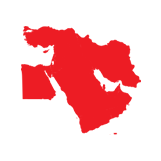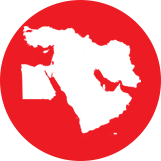People sheltering in Khan Younis in the densely populated south of Gaza are facing the impossible decision of whether to evacuate yet again or risk death or injury by staying in the city as it comes under intense bombardment.
Around 75% percent of the population of Gaza – some 1.8 million people – are estimated to be internally displaced, according to UNOCHA, with most having traveled to the south of the strip after being ordered to evacuate the north. They were told the south would be safe, yet even before attacks intensified over the weekend, the region faced consistent shelling in the previous weeks. It’s clear: nowhere in Gaza is safe.
The Israeli military has now issued evacuation orders for an area covering 20 percent of Khan Younis city, which was home to 117,000 people before the crisis and now hosts an additional 50,000 displaced people across 21 shelters. People living in a further area east of the city, encompassing 19 percent of Gaza, have also been told to leave and go south to Rafah or other designated locations. But with limited or no internet, people cannot scan the QR codes on Israeli-distributed leaflets indicating which places are supposedly safe. Those who choose to leave risk a dangerous journey, with no guarantee that they will be protected as they travel and only the prospect of even more overcrowded and unsanitary conditions at their destinations.
Yara*, a mother and humanitarian worker, has been displaced six times from her home in the north of Gaza. She said:
“Today, I am running from one place to another. I have been displaced six times, [trying] to protect my children from death which [follows us] everywhere.’
“I was displaced to the south at the request [of the Israeli occupying forces] because they said that it was safer in the south. Unfortunately, the bombing also hit us, even during our car trip… We moved from [north] Gaza to the south. It was a journey of death. The bombing was around us; we could not believe it.”
Jamal*, aged 12, and his family also faced a perilous journey when they left their home in the north to travel to the south of Gaza. He said:
“We went out, and there was no place to go except Salah al-Din Street…which is considered a safe corridor, and they [the Israeli forces] were shooting at people, and there were [bodies] on the ground.
“We were walking, and they stopped us for half an hour, after which we arrived, thank God. This was all after they told [us that] the south is a safe area. There is no safe place.”
People sheltering in the south are already living in near-impossible conditions without sufficient water, food, or warm clothes, and with vital infrastructure on the brink of collapse. Cramming more people into an even smaller area will only increase their misery, as well as the risk of disease, causing an even greater humanitarian disaster. Only a very limited amount of aid has entered Gaza since the temporary pause in hostilities ended on Friday. However, due to the intensity of the fighting, much of it has not been able to reach those in need. In Khan Younis, aid distribution was mostly stopped on Sunday due to the heavy bombardment.
Wala* is a youth volunteer with ActionAid Palestine. She said:
“In reality, there is no safe place. Not in Gaza nor the south. There’s bombing everywhere. If you were lucky enough to arrive at the camps, you’ll live in a tent that will not shelter you from the heat of the day, nor the cold at night.
It is a tragedy! A disaster in every sense of the word. Thousands of displaced people with nothing at all. No food, no water. Nothing to cover their bodies. Nothing at all… So, if the bombing doesn’t kill them, many other things will: the cold, hunger, thirst, or simply the horrible reality we are living.”
Riham Jafari, Advocacy and Communications Coordinator at ActionAid Palestine, said:
“Tens of thousands of people have already left behind their homes in the north and been displaced multiple times, facing extreme danger to travel to the south of Gaza, where they thought they would be safe. But nowhere in Gaza is safe. People sheltering in Khan Younis and other areas of the south are yet again trying to survive relentless bombing while living in desperate conditions. Now, they are expected to move again. Where are they supposed to go? How can they believe that anywhere in Gaza is safe?
“Until the bombs stop falling and a ceasefire is reached, there can be no genuine safe routes and no genuine safe zones in Gaza. Its people have already endured far, far too much: they desperately need a permanent ceasefire, now.”
ENDS
For media requests, please email Christal.James@actionaid.org or call 704 665 9743.
Spokespeople are available:
- Niranjali Amerasinghe, Executive Director of ActionAid USA
- Meredith Slater, Director of Development for ActionAid USA
- Riham Jafari, Coordinator of Advocacy and Communication for ActionAid Palestine
About ActionAid
ActionAid is a global federation working with more than 15 million people living in more than 40 of the world’s poorest countries. We want to see a just, fair, and sustainable world in which everybody enjoys the right to a life of dignity and freedom from poverty and oppression. We work to achieve social justice and gender equality and to eradicate poverty.


